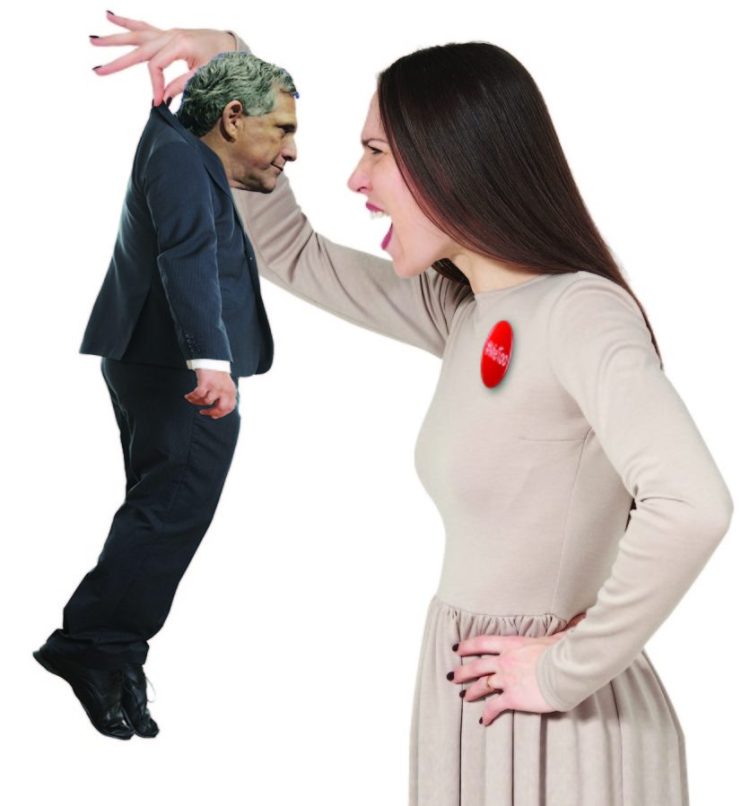Jericka Duncan, live on the “CBS Evening News,” looked unflinchingly into the camera as she explained how the story she had been covering – the turmoil over sexual misconduct at her own network – now involved the departure of yet another icon, “60 Minutes” chief Jeff Fager. The immediate reason: Text messages he had sent to a reporter.
“I am that reporter,” Duncan said. The broadcast reproduced the chilling words as Fager warned Duncan that she’d better not report on the highly credible allegations against him without substantiating them herself.
“Be careful. There are people who lost their jobs trying to harm me.”
Earlier in the day, the Hollywood Reporter published a guest column by Linda Bloodworth-Thomason – the hitmaking creator of “Designing Women” – who told the enraging story of how her work was stomped out by Les Moonves, the recently deposed head honcho of CBS.
“People asked me for years, ‘What happened to you?’ ” she wrote, and then answered her own question: “Les Moonves happened to me.”
Neither Duncan nor Bloodworth-Thomason have said they were victims of sexual harassment at CBS. But they certainly were mistreated.
And these two moments offer a hint of how widespread the damage of a misogynistic culture can be – with the harm extending well beyond the primary victims whose careers, in some cases, were irrevocably derailed.
Such a culture spreads far and wide, reaching its tentacles into the society at large, influencing even such monumentally consequential things as who occupies the Oval Office and appoints the Supreme Court justices.
The powerful and now-departed men of CBS – Moonves, Fager and star interviewer Charlie Rose – helped shape how our society sees women. The network, after all, is the most-watched in the nation. “60 Minutes” for 50 years has been the very definition of quality broadcast journalism: the gold standard.
It’s impossible to know how different America would be if power-happy and misogynistic men hadn’t been running the show in so many influential media organizations – certainly not just CBS.
What if ABC News’ Mark Halperin, for instance, had not been a leading commentator during the 2016 presidential campaign? (James Wolcott of Vanity Fair aptly described him as “a political kingmaker and narrative shaper” and “the most influential” of the men who were felled by sexual-misconduct allegations last year.)
What if Bill O’Reilly of Fox News hadn’t been the biggest cable TV star in the nation when a woman had a major-party presidential nomination for the first time? (O’Reilly was forced out after it emerged that he had made a $32 million settlement with an accuser.)
What if Roger Ailes hadn’t presided for decades over Fox News, where his own well-documented abuses bled freely into his network’s commentary and coverage – and still do?
“The personal is political,” Gloria Steinem famously said.
Should you scoff that it really doesn’t matter, consider a “humor” column published 50 years ago last week by Art Buchwald, one of the most prominent journalists of his day.
Under the headline “Uptight Dissenters Go Too Far in Burning Their Brassieres,” Buchwald takes down the feminist protesters at the Miss America pageant in Atlantic City in terms that seem shocking now.
“There is no better excuse for hitting a woman than the fact that she looks just like a man” is one of its wretchedly unfunny lines.
It set the tone for much of the coverage of the second-wave women’s movement protests, said historian Matthew Pressman of Seton Hall University, author of the soon-to-be-published “On Press: How Liberal Values Shaped the News.”
“A kind of groupthink can set in when a widely read columnist offers a forceful opinion on some topic, especially when the topic is just entering the consciousness of mainstream journalists,” Pressman told me by email.
The Buchwald column was influential, he said, because it reinforced what many white male editors at the time thought: “They considered the idea that middle-class white women were oppressed in any way to be laughable.”
And so the myth of feminists as silly bra-burners dominated women’s-movement coverage for years – not only because of Buchwald’s column, but certainly in part.
And so, too, with Halperin and Hillary Clinton. So, too, with Les Moonves and Linda Bloodworth-Thomason. So, too, with Jericka Duncan and Jeff Fager.
A media figure doesn’t have to show up for a business meeting in an open bathrobe to do harm, though that strange practice has turned out to be something of a leitmotif.
He can help frame the coverage of a candidate’s supposedly disqualifying flaws. He can squelch a writer’s promising work. He can threaten an underling’s job if she doesn’t stay in line and remember who really runs the show around here.
All these little moments add up, though we’ll never know their full cost. Only that it’s very, very high.
Send questions/comments to the editors.


